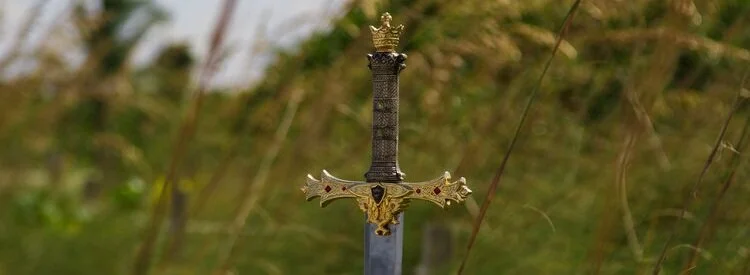Ready for a quest? In this course, we will study the stories of King Arthur, Merlin, and the Knights of the Round Table, from their mediaeval origins to contemporary satires and critiques.
Rooted in British landscape and architecture, the mythology of Camelot reveals how our sense of place informs culture and history, and culture and history shape our sense of place. Sites within an hour of Bath include the fabled burial sites of Arthur, Guinevere, and the Holy Grail, as well as a hill fort where Arthur and his knights allegedly reappear at night on Midsummer’s Day. By studying the mediaeval, romantic, and contemporary retellings of Arthuriana in literature, film, and television, we will ultimately ask what role these stories play in formulating British identity over time and in our current moment.
The mediaeval poem Sir Gawain and the Green Knight and the contemporary film The Green Knight (2021) will be key texts for the course. Other readings will include brief selections from texts across a wide span of time, including Geoffrey of Monmouth’s The History of the Kings of Britain, Thomas Malory’s Le Morte d’Arthur, William Morris’s The Defense of Guenevere; Alfred Lord Tennyson’s Idylls of the King; Mary Stewart’s The Crystal Cave; T.H. White’s The Once and Future King, Neil Gaiman’s “Chivalry,” and films such as Excalibur (1981) and, of course, Monty Python and the Holy Grail (1975).
An overnight study trip takes us to Tintagel on the sublime cliffs of Cornwall, a site key to understanding the fraught dynamics of gender, religion, magic, and nation-making in the stories of Merlin.
Professor: Megan Snell, Visiting Asst Prof of English, Wells College, msnell@wells.edu

